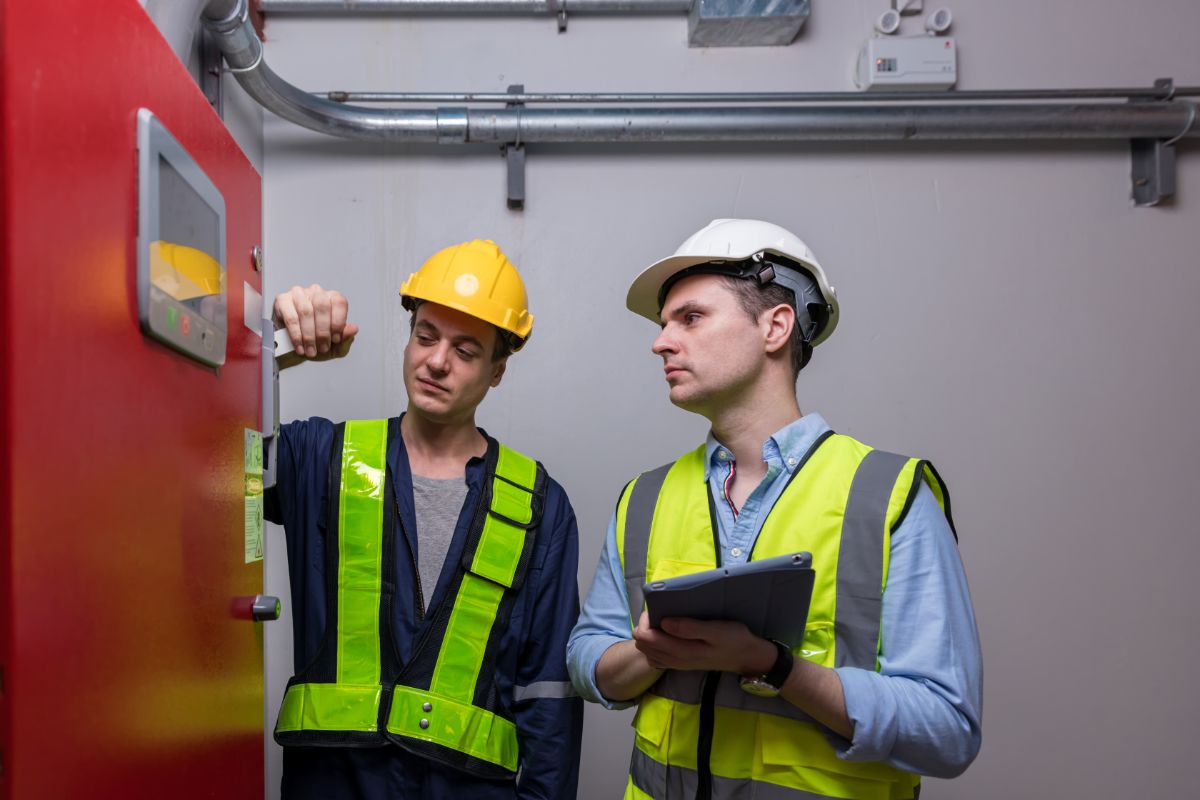A very important part of any building’s fire safety system is the fire monitoring system. While fire alarms are meant to sound when they sense smoke or fire and call for help, monitoring systems keep an eye on the whole fire safety system to make sure it is working properly and is ready for action. These systems keep an eye on important pieces of equipment like fire pumps, ventilation systems, control valves, water supplies, and power sources to make sure everything works as it should. It’s not enough to just check off the boxes during inspections to keep your fire monitoring system in good shape; you need to keep an effective network that protects lives and property.
Why regular system maintenance is important
Like any other complicated technology, fire control systems need to be serviced regularly to work properly. Environmental factors, wear and tear, or human error can cause sensors, cables, and control screens to break down over time. Failure to monitor these minor issues can lead to signal failures, false alarms, or worse, system breakdowns during a real emergency. Regular repair reduces the likelihood of unexpected problems and extends the lifespan of the entire system. It also makes sure that local fire rules and insurance requirements are followed, which often require that fire safety equipment be inspected and serviced on a frequent basis.
Checking Key Parts On A Regular Basis
Inspections of all the watched parts on a regular basis are an important part of keeping your monitoring system in good shape. Control valves should be checked visually to make sure they are open and shut properly. Check to see if the tamper switches are lined up correctly and that they work properly. Sprinkler systems need to be checked for leaks, rust, and other problems. Conditions of the fire pump need to be checked, such as the amount of fuel for gasoline units and the amount of oil in the bearings. By making a plan for regular inspections, you can make sure that all the parts of the fire protection system are still working and meeting the rules.
Checking for connectivity and signal transmission
Communication problems between system parts and the monitoring control screen are one of the most common problems with fire management systems. This could happen if the wire is broken, the network messages are weak, or the hardware isn’t working right. Testing data paths on a regular basis helps find connection issues before they slow down the system. These days, many monitoring systems can send notifications to other locations, so it’s important to check the internet or cell phone contacts on a regular basis. For accurate alerts and quick action in case of problems, it’s important to make sure that data transfer between field devices and central panels is reliable.
Cleaning and taking care of the environment
Extreme temperatures, dust, and wetness can all make a fire monitoring system work much less well. Control switches and monitors should always be clean and free of anything that could get in the way. Controlling the environment is important in panel rooms and around sensors, especially in places with a lot of foot traffic, high humidity, or industrial smells. Using the right shelters and temperature control methods can keep sensitive parts from wearing out too quickly. Keeping wires and electronics away from sources of shaking or electromagnetic interference will also help cut down on fake alarms and gear stress.
Running Functionality Tests
To keep your management system in good shape, it’s important to do regular functioning tests. Some of these tests include manually activating valve tamper switches, simulating a power outage to check backup systems, and conducting test runs on fire pumps. When you test the system as a whole instead of just one part at a time, you can find bugs that might not be obvious until the system is actually used. Writing down these test results helps you keep track of how well the system is working over time and gives auditors or inspectors something useful to look at during official reviews.
Keeping your firmware and software up to date
Software is often used to handle signs, keep track of events, and send alerts in modern fire management systems. Manufacturers sometimes put out changes to fix bugs, make things safer, or make them work better. It’s important to keep these changes up to date so that your system works at its best. Make sure you check in with your fire system provider or installer on a regular basis to make sure your system has the most up-to-date software and code. If you don’t do changes, your system could be vulnerable to cyberattacks or have trouble working with other building control systems.
Teaching staff to be aware of the system
Everyone in the building is responsible for maintenance, not just workers. The people who work in the building should be taught what management signs mean and how to act properly. If a valve tamper signal goes off, employees should know how to check the state of the valve or get help from a professional. When there is a problem with the system, delays and confusion are lessened when staff are taught to spot different panel signs and follow reporting procedures. Making people in the building and on staff more aware can greatly enhance response times and system dependability.
Making a log and maintenance schedule
A organized repair routine is what makes a fire control device reliable over the long term. Having a schedule of regular checks makes sure that no part of the system is missed, whether you keep it yourself or hire someone else to do it. In maintenance logs, you should write down the date of the inspection, the part that was checked, any problems that were found, the steps that were taken to fix them, and the name of the person who did the inspection. This paperwork not only helps figure out why problems keep happening, but it also shows that safety rules were followed during audits or insurance reviews.
Quickly responding to signals from supervisors
A big risk is ignoring or putting off action on monitoring alerts. The alert typically indicates a vulnerability in the security system, even in the absence of a fire. By promptly investigating and addressing these minor issues, you can prevent their escalation. Whether it’s a signal for a tampered switch, low air pressure, or a pump run warning, these alerts are meant to give you a chance to take action right away. Setting up a regular way to react to supervisory signs makes sure that problems are quickly brought to the attention of higher-ups and fixed.
Working together with qualified experts
Staff members who work for the company can do basic checks and small repairs, but for full system checks, it’s best to work with a qualified provider of fire protection services. These experts have the right training, licenses, and tools to figure out complicated problems, fix them, and make sure the system is compliant. When you work with a reputable provider, you can be sure that you are up to date on any changes to fire safety rules or new technology. Routine repair deals with professionals can make your system run better and give you more peace of mind.
Getting ready for emergencies and future improvements
Planning for the unplanned is also a part of maintenance. Having backup parts, extra batteries, and written down emergency plans can help you act quickly in a disaster. As building needs change and new technologies come out, you might want to replace older systems with ones that are smarter and work better together. Examples of these improvements include cloud-based tracking, smart alerts, and enhanced analytics that can identify problems before they occur. By buying systems that are scalable and ready for the future, you can be sure that they will be reliable and flexible as your facility’s needs change over time.
In conclusion
It’s not enough to just stop annoying signs and pass regular checks to keep your fire control system in good shape. It’s an active dedication to protecting lives, keeping systems safe, and keeping the business running. You can make sure your system works perfectly when it means most by keeping it in good shape, making sure your staff knows about it, and forming smart professional relationships. Every little thing that is done, like checking the signal transfer, reviewing valves, or testing pumps, adds up to a strong safety net that keeps people and property safe. When you put long-term care first, your fire monitoring system becomes a silent but strong safety partner in the building.

